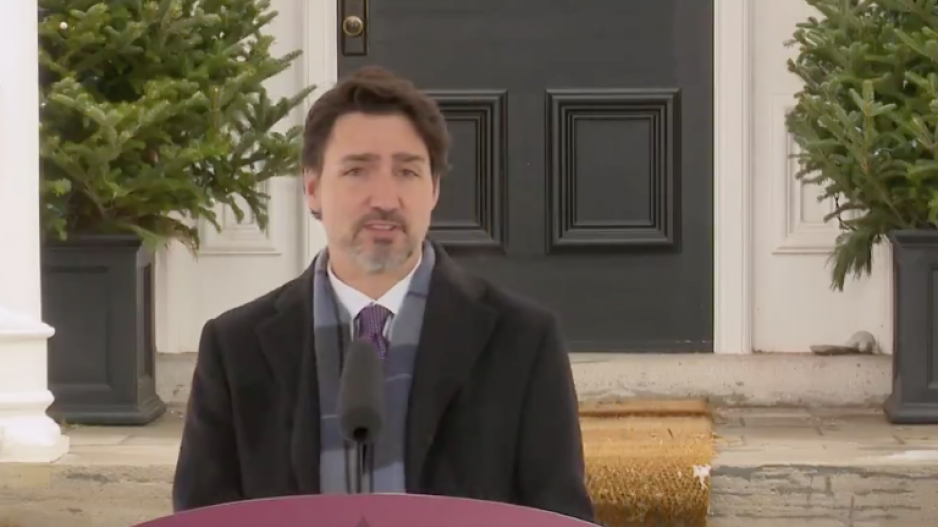While the White House this week is offering stark estimates of COVID-19’s potential death toll, Prime Minister Justin Trudeau is remaining tight-lipped on Canada’s own projections.
The prime minister was pressed repeatedly Thursday (April 2) during his daily media briefing outside his home in Ottawa about releasing government analysis on the pandemic.
“I think people can imagine a range of scenarios that shows everything from everyone gets suddenly better within the next few weeks, to this situation just keeps getting worse and we face a situation like some other countries in the most dire situations have,” Trudeau said.
“There is a range out there and just highlighting that range is not as useful or important as being able to get clearer numbers and clearer analysis of what we are likely to face.”
The prime minister said he would be speaking to provincial and territorial premiers later in the day to ensure all jurisdictions’ data is aligned and the country can develop more accurate models.
He said the government has been transparent about release raw data — such as the number of cases and deaths.
But Trudeau did not offer a timeline on when analyses offering projections of possible outcomes of the pandemic would be released to the public.
“Those analyses depend directly on Canadians’ behaviours. They depend on whether people follow the rules on social distancing,” he said.
“These kinds of things will have a direct impact on which of the various models that are out there will be the one we take.”
On Wednesday, B.C. officials revealed there have been 53 additional COVID-19 cases since the day before, bringing the total to 1,066, and one additional death, bringing the total to 25.
Meanwhile, also on Wednesday Trudeau urged the recall of Parliament to pass additional measures to manage the economic fallout of the pandemic, calling it “that largest economic program in Canada’s history.”
A small group of parliamentarians was recalled March 24-25 to pass a $107-billion COVID-19 relief package.
Ottawa also revealed Wednesday the Canada Emergency Wage Subsidy program would cost $71 billion to cover 75% of wages for workers at organizations suffering 30% declines in revenue year over year.
By keeping more workers on the company payroll, the federal government wants the wage-subsidy program to take pressure off the Canada Emergency Response Benefit (CERB), which will offer $2,000 monthly payments to Canadians who find themselves out of work or with reduced incomes because of the pandemic.
The CERB is now pegged at $24 billion following March 27 revisions boosting the wage subsidy from 10% to 75%.
Changes to the subsidy will be backdated to March 15, while the program will run 12 weeks until June 6.
But it might be too late for some capital-starved businesses, with funds from the wage-subsidy program not expected to reach companies for another six weeks.
A new portal will be opening up on the Canada Revenue Agency’s website in the coming weeks for applications to the subsidy program.
Finance Minister Bill Morneau said Wednesday it will be on employers to “attest” they are doing everything they can to pay the remaining 25%, but he acknowledged the government is only “asking” companies to pay the remainder.
The subsidy will cover up to 75% on the first $58,700 an employee earns — a maximum of $44,025, or $847 a week — regardless of the size of the company he or she works.
CERB applications, meanwhile, are expected to be online at Canada.ca beginning April 6 for those who haven’t already applied for employment insurance.




